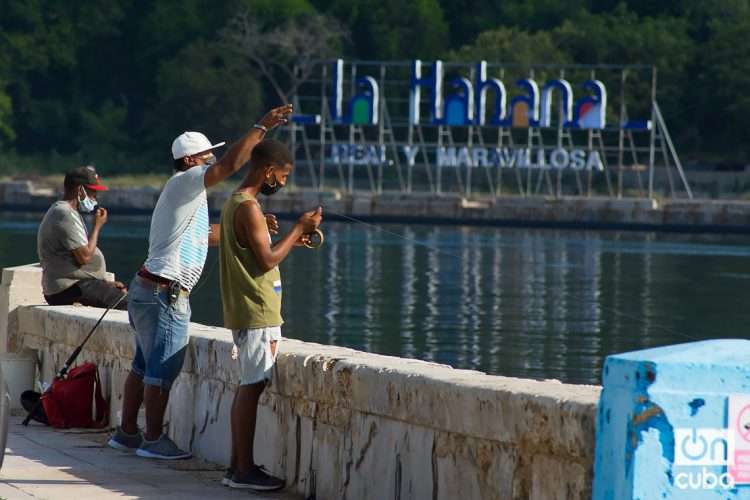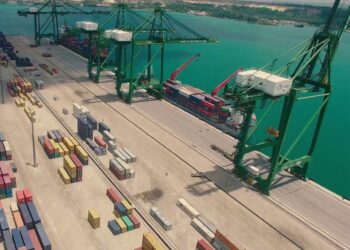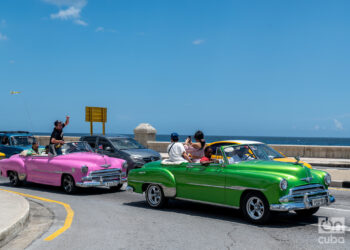These days Havana is no longer like it was a few weeks ago. The beginning of a new de-escalation, with the improved epidemiological indicators in the city, has brought changes in the general panorama, but, above all, in people’s perception, divided between those who enthusiastically embrace the “flexibility” of the restrictions and those who observe the new scenario with caution and even fear.
Along with the restart of table service in restaurants and cafeterias, announced a week ago, with logical limitations, the long-awaited reopening of the beaches, swimming pools, gyms and the Havana Malecón seaside walk returns in more than one aspect the Cuban capital to the previous panorama upon the arrival of the coronavirus and gives the coup de grace to an idea of confinement that, in reality, never fully came into being.
And the fact is that, unlike other Cuban provinces and localities, which have applied more severe strategies during the prolonged and complex wave of COVID-19 in recent months, Havana has been more flexible with the measures and closing times and it has even kept urban transportation running throughout 2021. After more than a year of reporting its first cases, and with the masks already becoming part of the landscape, Havana’s streets have assumed their own “normal,” as crowded and busy as before, and with the shortages, difficulties and routines added by the pandemic.
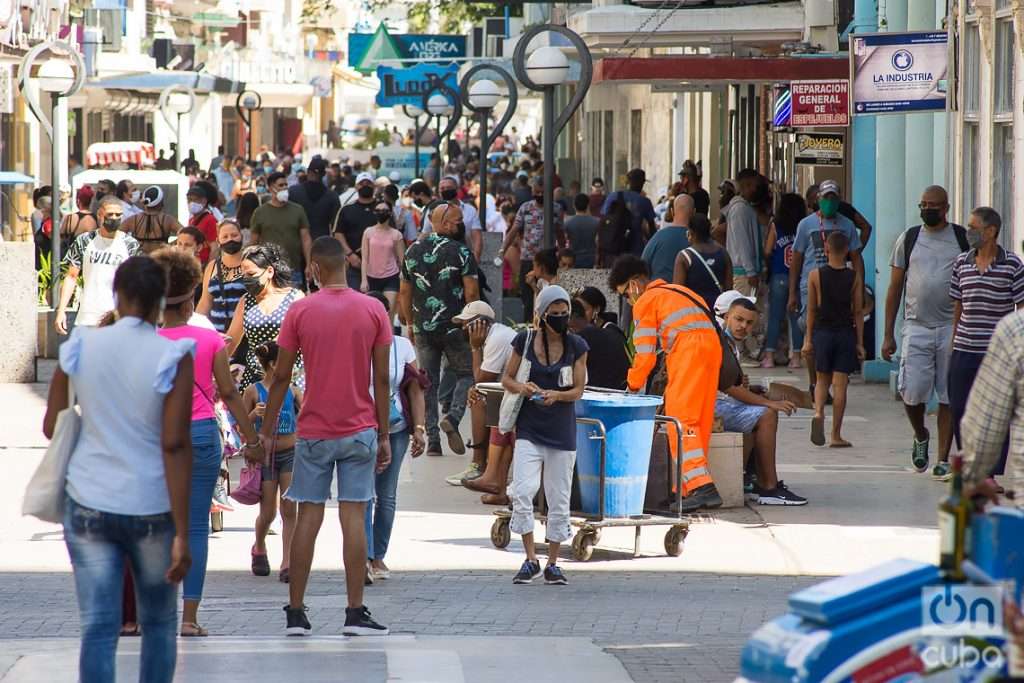
Not even in the harshest moments of the re-outbreak, when there were more than a thousand reported infections per day, did the city return to closures and the strict curfew of the previous year, while the authorities called for self-responsibility and bet on localized control and the immunization process — which had the capital as a pioneer and, at the same time, a testing ground — to reduce the negative figures. And now that vaccination seems to be doing its bit, according to official statistics, several of the restrictions that were still in place are beginning to be dismantled and others, such as those for theaters, nightclubs and interprovincial transportation, could disappear in the next weeks if the reduction of infections trend is confirmed.
For now, this week the city of Havana has reported less than 400 cases per day, while the incidence rate at the end of this Thursday was 303.4 per 100,000 inhabitants in the last 15 days, much better than Cuba’s average ― over 900 ―, and only surpassed by the rates of Matanzas and Isla de la Juventud, the territories with the best epidemiological indicators in the country today. Meanwhile, more than 90% of the population has been vaccinated and the immunization of those allergic to thimerosal, including children and adolescents, was also going well.
With this reference, this Monday the 2020-2021 school year, up to now so full of incidents, will resume in the classrooms of Havana, although for now only for senior high, technical and professional education and pedagogical schools, whose students were the first to be immunized — in their case, with the Abdala vaccine — once the authorities gave the green light to vaccination in children under 19 years of age. And it is not surprising that, in a short time, with the administration of all the doses to the other children and adolescents of school age, the daily activity will return to the schools and the uniforms and scarves are reintegrated into the city landscape.
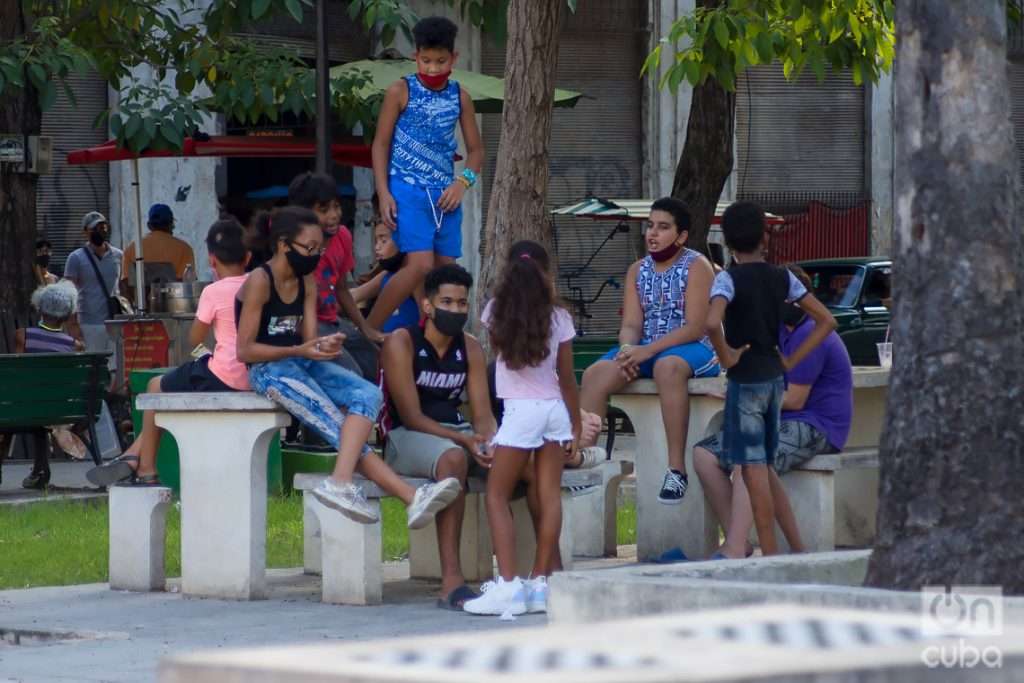
Malecón seaside walk opens
One of the measures with the greatest impact on the psychology of Havanans is, without a doubt, freedom of access to the Malecón seaside walk. The long and iconic wall had long been banned for pedestrians — although some did go from time to time — a decision that many did not understand and whose reversal they did not delay in celebrating.
“It was really about time they let people through,” says Bernardo, one of the fishermen who wasted no time and this very Thursday went with his rod and other fishing gear to the place where for so many years he has gone over and over again. “It doesn’t matter if you have to wear a face mask and keep a distance, but I at least couldn’t hold out any longer without coming to fish,” adds this man with skin tanned by the sun and saltpeter, and who says that something is missing from his life if he can’t spend hours and hours on the Malecón.
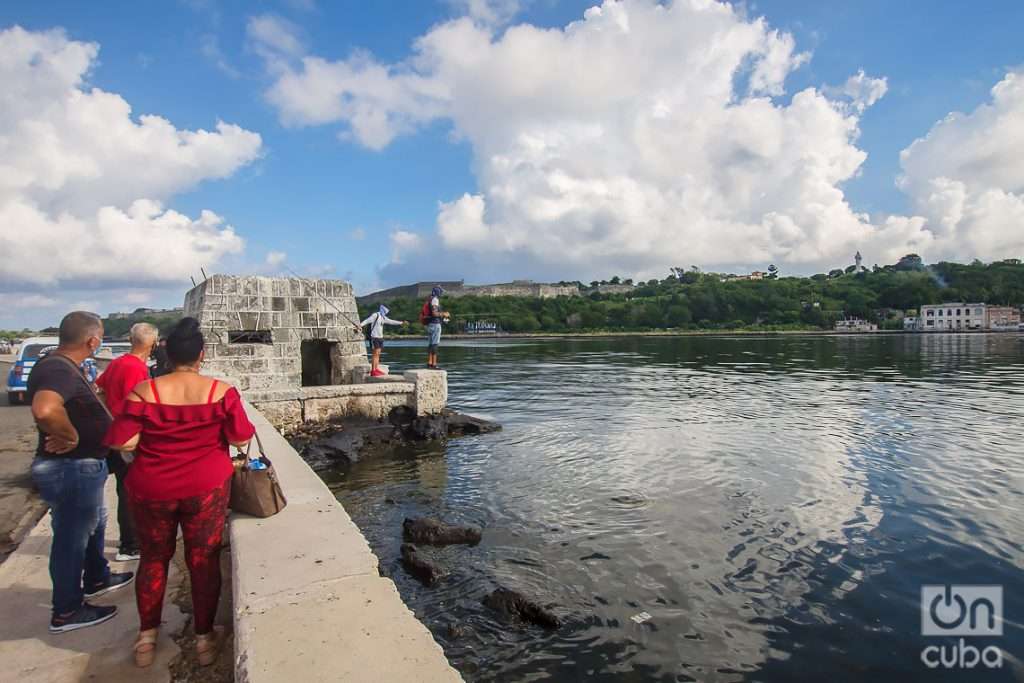
“Just imagine, I got COVID and I had to be admitted, because I suffer from high blood pressure, and one of the things that gave me the most strength to leave the hospital, in addition to my family, was the desire to be able to fish again,” he says. “So I was really looking forward to this.”
But Bernardo and other regular fishers weren’t the only ones who longed for the reopening. Walkers, runners, couples and families also awaited the news of the return and, as soon as they announced it, they have returned to walk around the wall and sit on it, to share and enjoy the sea, at least until 10:30 p.m., when the prohibition of movement returns.
“I hope if things continue to improve, that will also be removed,” says Miriam about the limitation of night hours. She, who has been practicing teleworking due to the pandemic, went out this Thursday to “take a walk” with her husband and “take a close look at the sea,” something that, she says, she very much wanted to do “after so much confinement.” For this woman, as for other passersby consulted, “it made no sense that they let people go to the parks and other places and didn’t allow sitting on the Malecón wall, which is a totally open place with a lot of air.”
“That, not to mention the buses and the queues, which seem much more dangerous to me because of the lack of distance between people, and yet they have practically not stopped,” she points out.
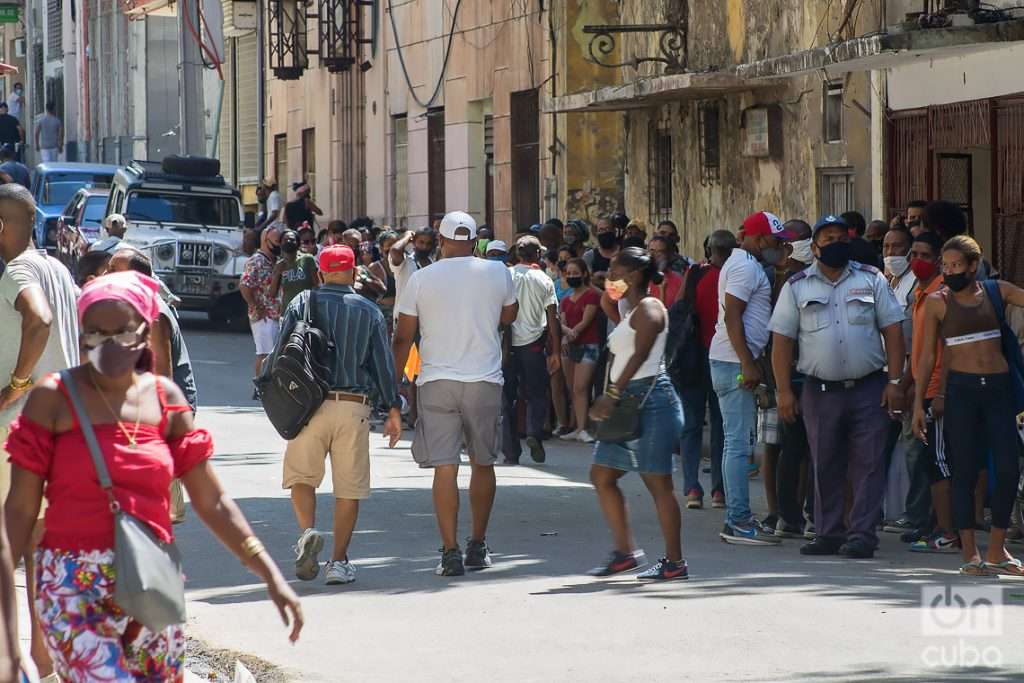
“The Malecón gives another life to Havana,” Rogelio, her husband, seconded her. “It is the place where people come to take in the breeze, to fall in love, to disconnect, to have a good time. This is why everyone was waiting for them to open it, especially after all these hard months of pandemic. Besides,” he adds jokingly, “it’s much more romantic and cheaper; each one brings their own and hangs out without having to spend their salary in a paladar, because right now the prices have skyrocketed.”
Tables and prices
For a week, more than 500 private and state restaurants and cafeterias in Havana have been authorized to offer their service at tables, bars and counters, after months in which only home deliveries and take-out were allowed. Open and ventilated spaces, an appropriate distance between tables and hygienic and protective measures for clients and workers are some of the requirements imposed by the authorities, which many have gladly complied with.
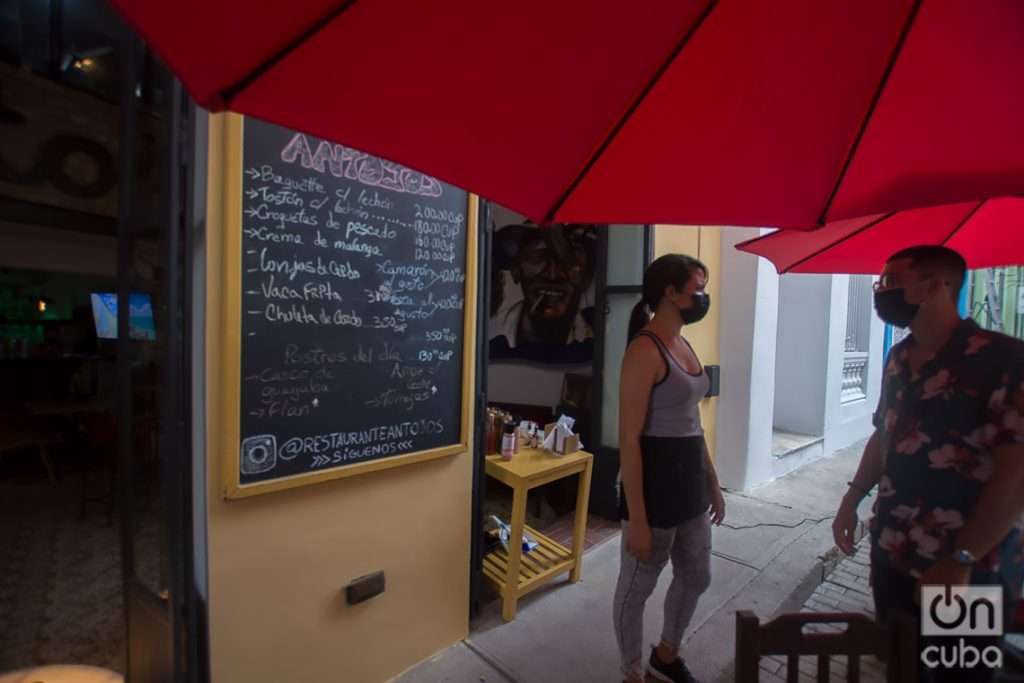
For Cristian and Yeni, who decided to “hang out” at the Old Havana brewery, the above are “logical measures,” at least for the moment, as long as there is still a “real risk” of catching the coronavirus and the effect of vaccination is not greater. Both think that with these conditions the reopening “is fine,” because “people need to change their environment and the economy needs to pick up.”
“The pandemic has lasted much longer than we initially imagined and everyone has felt it,” said Cristian. “That’s why the opening up seems good to me as the situation begins to improve. Other countries that have a better economy have also done this, and I don’t see why it can’t be the same here.”
More cautious are Yaima and Martha, who, however, were “excited” to also go to the brewery with some friends. “I think they’re opening a bit quickly, because the pandemic has not ended and there are still many cases, even more than those that Dr. Durán says on television,” says the first, who justifies what she says with the example of several acquaintances who, “even having some symptoms, have not been tested, because they are vaccinated and have been told that they are not vulnerable.” So, she affirms, “you have to continue taking care of yourself,” but also “take advantage” of the de-escalation “because you don’t know how long all this will last.”
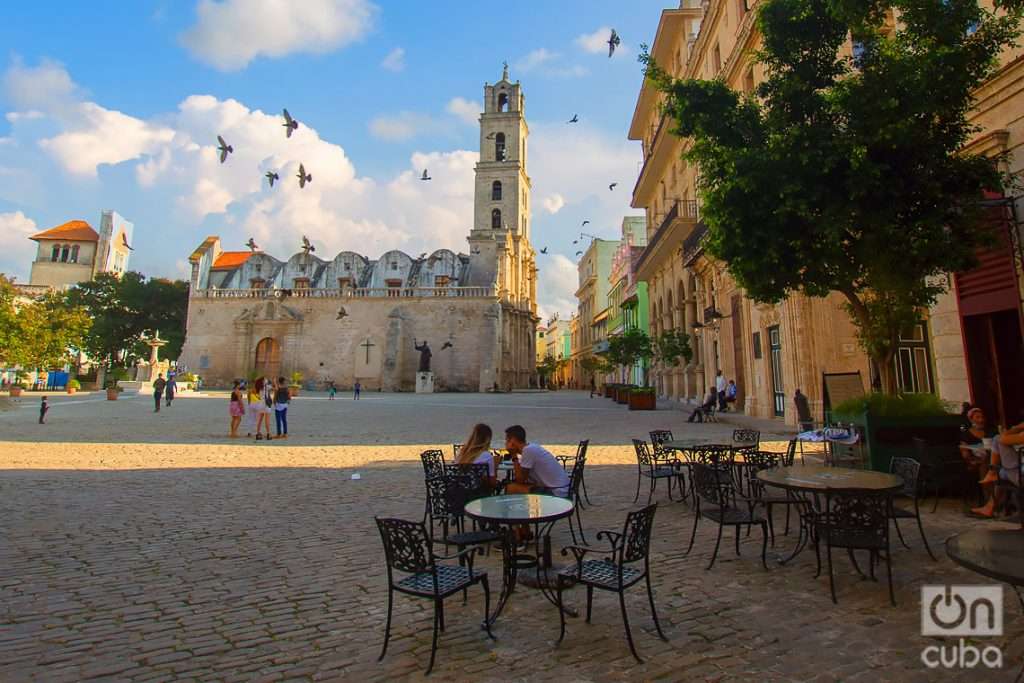
“Look at last year,” Martha supports her. “They opened and had to close again some time later, because the situation got complicated again. I hope the same doesn’t happen this time, but, just in case, this time we started going out from the beginning. Last time we took a little while and we didn’t even go to the beach much, but now we are going to try to make better use of the time. Taking good care of ourselves, of course.”
However, that taking advantage is not so easy for everyone and this is because of the menus and blackboards of the restaurants. Main courses over 300 pesos (CUP), pizzas over 200, beers at 120 and 130, soft drinks at 80, coffees at 50, desserts also above 100, are some of the prices faced today by customers, especially those of private establishments, and there are also even higher ones depending on the sophistication of the dish or the place. Thus, a family meal or a meal with a group of friends can cost as much as a worker’s monthly salary, or more, and the reports of the first “licks” quickly went viral after the reopening.
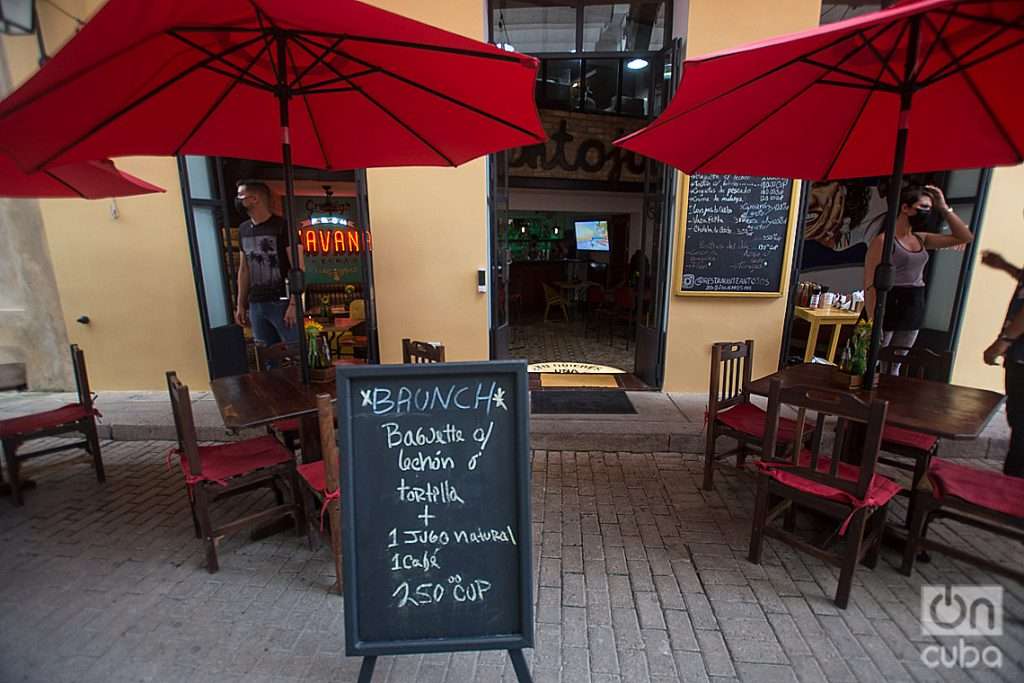
“There is no pocket that can stand it,” asserts Maikel, who, however, recognizes that it is “complicated” because “everything is expensive” and “maintaining a restaurant today, with street prices, must be very difficult.” He, who has just paid more than 2,000 pesos in a pizzeria in Old Havana, does not lose sight of the fact that “many things no longer exist and when they are obtained, their price is through the roof,” so for him it’s clear that, even if it is good to “go out and disconnect” with his wife and daughter, he now has to dose those outings much more than before for the sake of his economy.
His point of view is confirmed by Carolina, who works as a waitress and knows about “the number of bills” and the “inventions” that private establishments often have to “get ahead.” “Right now people see the prices and get upset because they compare them with those from before, when CUC existed, but that time has passed. Now salaries are different and many things can only be bought in freely convertible currency. And on the street this currency is at 70 and 75 pesos, not 24 as the official exchange rate. And buying ‘under the counter’ is similar, you are always ‘fined,’ so prices have to go up.”
Even so, the young woman is grateful that she has returned to waitressing “because we already needed to start working and earn some money.” That “some,” she explains, depends largely on tips “and if there are no customers there are no tips.” Thus, she trusts that, although for now many sites are mostly empty much of the time, which means that, at least for the moment, it is not necessary to book in advance, “little by little” people will return “to consume.” And she hopes that if the pandemic is controlled and the limitation of capacity and hours ends “things could be like before, or, at least, as similar as possible.”
On the way to the end of the year
Apart from the novelties with the restaurants, the Malecón and the beaches — which some have already begun to attend and many prepared to storm this weekend — Havana life maintains its usual images of recent months, with long queues, crowded streets, buses and cars that move from one place to another, children playing, street vendors, and various places and services that are reopening little by little. It also preserves its most recent rhythms and dynamics, some of them now made official as part of the de-escalation.

Cristian, for example, celebrates the reopening of the gyms to “burn” again with good equipment and with his friends, instead of continuing to exercise alone at home, as he has done in recent months. Yeni, on the other hand, prefers to wait for “the situation to improve a little more,” because, he points out, she finds it difficult for weights and equipment to always be cleaned and disinfected after a person uses them, as has now been stipulated. In addition, she claims, she got used to running and exercising outdoors, something that seems “healthier” and that she has been doing with some friends during the pandemic, even though it was not officially allowed.
Even with this “normalization” underway, well received or, at least, assumed naturally by the majority of Havanans, some do not hide their concerns for the nearest future.
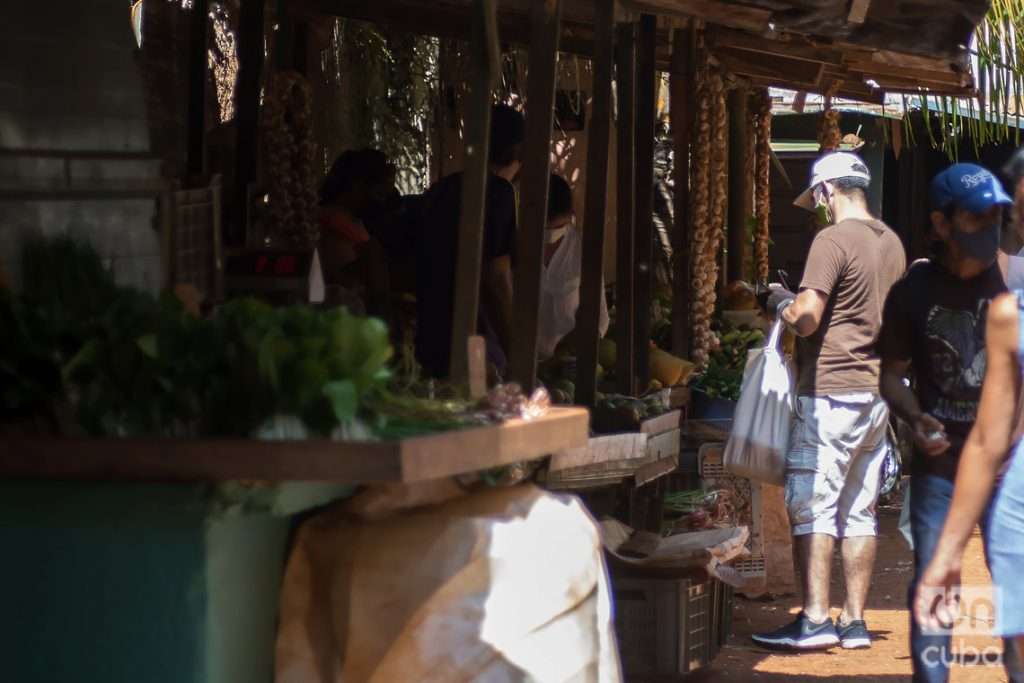
“The school thing worries me a little, I’m not going to lie to you,” says Miriam, mother of two children who had stayed at home “studying,” while she and her husband walked along the Malecón. “No matter how many measures teachers take, you know what children are like,” she argues, although she acknowledges that “the fact that they are already vaccinated is a peace of mind” and reasons that “if the classes continue to be delayed they (the children) will not learn the same, because on television it will never be the same.”
In addition, she understands, as other parents also believe, that the school should also help “control the boys,” which, she assures, has become more difficult as the pandemic continues. “Just imagine, I have two children and with the girl it’s easier, because she is smaller, but with the boy it’s quite different. I try to keep him as busy as possible, but the streets have been full of boys playing for a long time, and that way it’s very difficult.”
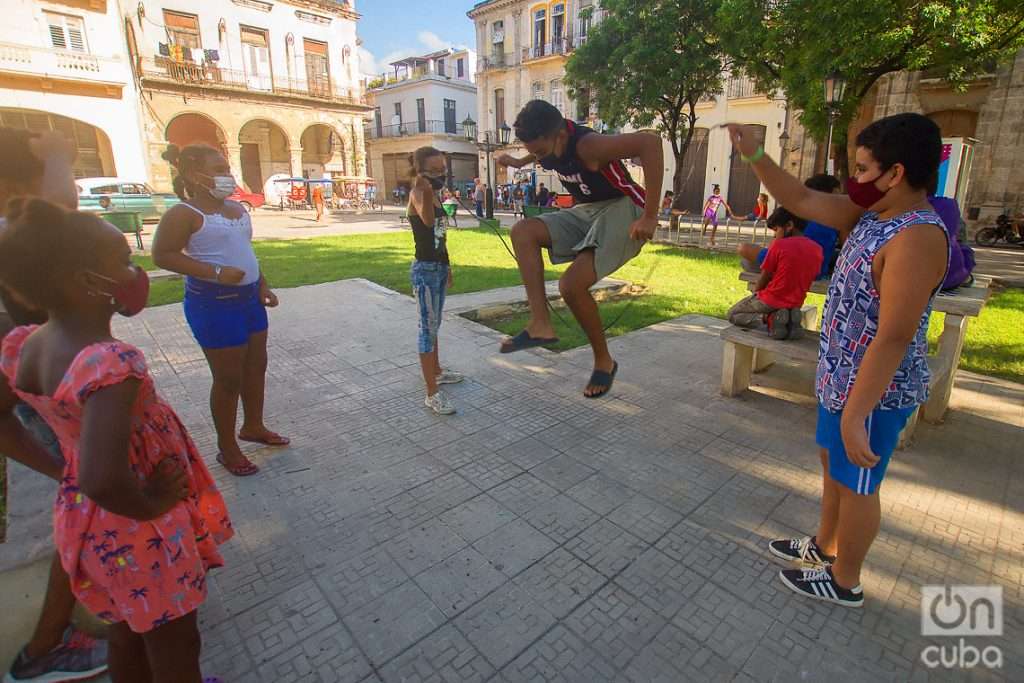
Yaima and Martha are also concerned about the reopening of borders and tourism, announced for mid-November. “Last year that was what made things difficult again, because many people did not comply with the measures. They started having parties and visiting friends, and the infections immediately began to rise,” recalls the second. “Now, it is assumed that tourists are going to enter vaccinated and that here practically everyone is going to be vaccinated as well. This is a supposition,” she emphasizes, “but there are people who cheat: they invent vaccination certificates and negative PCR tests. And, in addition, there is the risk of new variants entering. Look what happened with the Delta and now there is another one out there that they say is also dangerous and reduces the effectiveness of vaccines. Can you imagine that it will also get here after all we’ve already been through?”
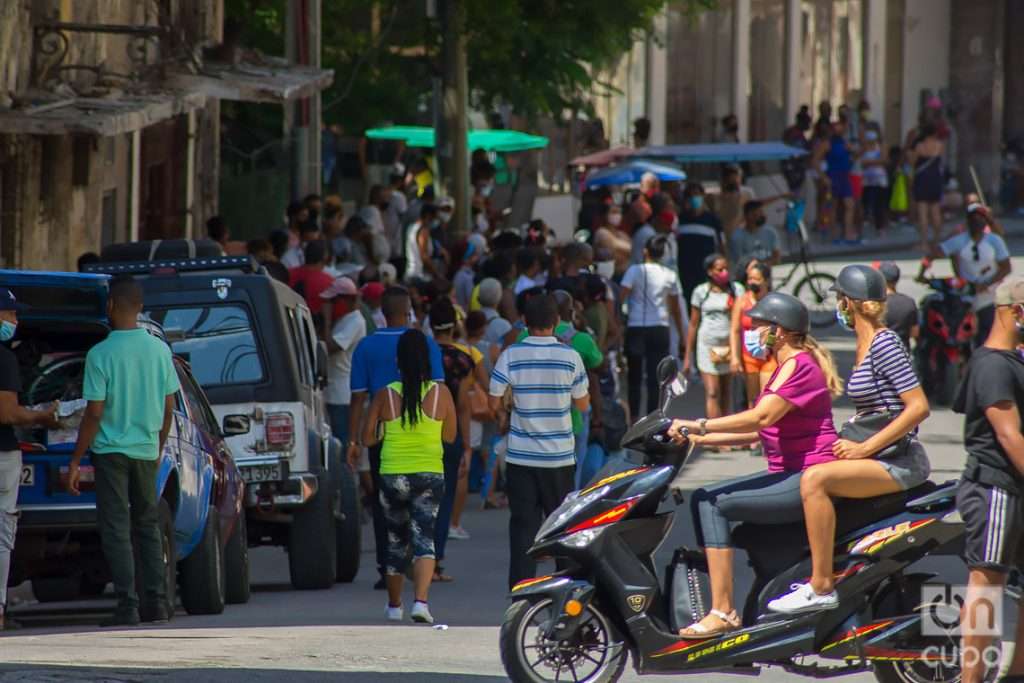
That’s why, she reiterates, “you have to take great care of yourself and see how all this evolves.” “And take advantage while you can,” complements Yaima, who announces that in a while they plan to “show up in the Malecón” to take their first walk in the area after the start of the de-escalation and “see how the environment is.” “Let’s hope everything continues to improve and we can have a good end of the year. And that there is no turning back, because this country deserves it. What the hell, we deserve it,” she concludes. But you never know what might happen tomorrow, right?

